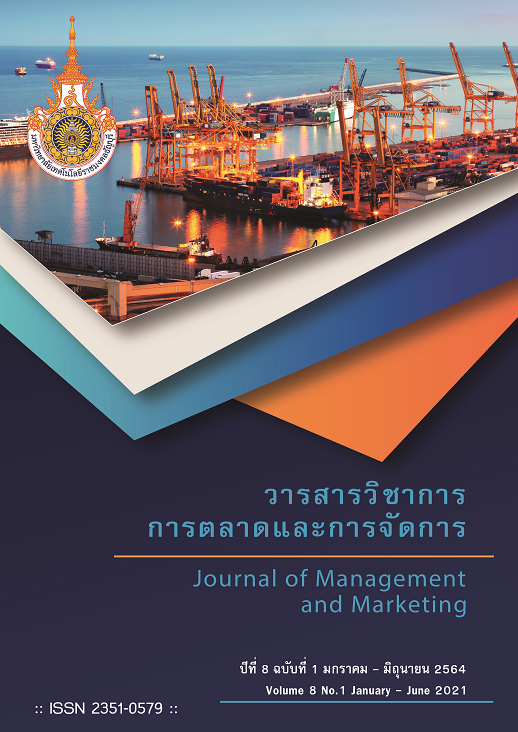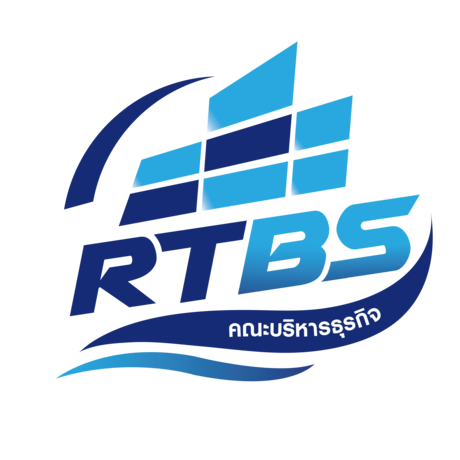MEASUREMENT DEVELOPMENT OF GREEN BUSINESS PERFORMANCE: AN EVIDENCE FROM AUTOMOBILE MANUFACTURERS IN THAILAND
คำสำคัญ:
Confirmatory Factor Analysis, Green Business Performance, Automobile Manufacturersบทคัดย่อ
This study had objective to develop and confirm the measurement model of green business performance in automobile manufacturers in Thailand. The samples were of 400 employees who are working in automobile manufacturers. Purposive and proportion sampling method were used to distribute the questionnaire, which was developed as a research instrument. The data analysis employed second- order confirmatory analysis. The study indicates that green business performance in automobile manufacturers in Thailand consists of 3 dimensions with 19 indicators with model fit indices: p-value of 0.000, CMIN/df of 1.950, GFI of 0.956, AGFI of 0.911, RMSEA of 0.049, RMR of 0.009, CFI of 0.992, TLI of 0.985, and NFI of 0.983. Furthermore, environmental performance with 7 indicators has the most influential factor loading as of 0.954, then followed by social performance with 6 indicators with factor loading as of 0.953 and economic performance with 6 indicators with factor loading as of 0.873, respectively. The study result can be applied by the automotive manufacturers to measure and guide their sustainable business success.
เอกสารอ้างอิง
Alhamali, R. M. (2019). Critical success factors for green supply chain management practices: An empirical study on data collected from food processing companies in Saudi Arabia. African Journal of Business Management, 13(5), 160 - 167.
Arbuckle, J. L. (2011). IBM SPSS Amos 20 user’s guide. Mount Pleasant, USA: Amos Development Corporation, SPSS Inc.
Aykan, S., & Nalçacı, E. (2018). Assessing theory of mind by humor: The humor comprehension and appreciation test (tom-hcat). Frontiers in psychology, 9, 1470.
Azevedo, S. G., Carvalho, H., & Machado, V. C. (2011). The influence of green practices on supply chain performance: A case study approach. Transportation research part E: logistics and transportation review, 47(6), 850 - 871.
Banihashemi, T. A., Fei, J., & Chen, P. S.-L. (2019). Exploring the relationship between reverse logistics and sustainability performance. Modern Supply Chain Research and Applications, 1(1), 2 - 27.
Brown, C. E. (1998). Coefficient of variation. In Applied multivariate statistics in geohydrology and related sciences (pp. 155 - 157). Berlin, Germany: Springer.
Çankaya, S. Y., & Sezen, B. (2019). Effects of green supply chain management practices on sustainability performance. Journal of Manufacturing Technology Management, 30(1), 98 - 121.
Chidchob, T., & Pianthong, N. (2020). Effect of Driving Force, Knowledge Management, Green Supply Chain Management on Competitiveness and Business Performance of Manufacturing Industries in Thailand. International Journal of Environmental Science, 5, 63 - 73.
Chienwattanasook, K., & Jermsittiparsert, K. (2019). Effect of Technology Capabilities on Sustainable Performance of Pharmaceutical firms in Thailand with moderating role of Organizational Culture. Systematic Reviews in Pharmacy, 10(2), 188 - 197.
Connolly, T., Conlon, E. J., & Deutsch, S. J. (1980). Organizational effectiveness: A multiple-constituency approach. Academy of management review, 5(2), 211 - 218.
Dilekli, Y., & Tezci, E. (2019). Adaptation of Teachers' Teaching Thinking Practices Scale into English. European Journal of Educational Research, 8(4), 943 - 953.
Faleye, B. A. (2008). Reliability and factor analyses of a teacher efficacy scale for Nigerian secondary school teachers. Revista Electronica de Investigacion Psicoeducativa, 6(3), 823 - 846.
Fernando, Y., Jabbour, C. J. C., & Wah, W.-X. (2019). Pursuing green growth in technology firms through the connections between environmental innovation and sustainable business performance: does service capability matter? Resources, Conservation and Recycling, 141, 8 - 20.
García-Machado, J. J., & Martínez-Ávila, M. (2019). Environmental Performance and Green Culture: The Mediating Effect of Green Innovation. An Application to the Automotive Industry. Sustainability, 11(18), 4874.
Green, K. W., Bhadauria, V. S., Zelbst, P. J., & Meacham, J. (2012). Green supply chain management practices: impact on performance. Supply chain management: An international Journal, 17(3), 290 - 305. doi.org/10.1108/13598541211227126
Hair Jr, J. F., Hult, G. T. M., Ringle, C., & Sarstedt, M. (2016). A primer on partial least squares structural equation modeling (PLS-SEM). Thousand Oaks, California: Sage publications.
Hajiar, S. (2014). A statistical study to develop a reliable scale to evaluate instructors within higher institution. WSEAS Transactions on Mathematics, 13, 885 - 894.
Halek, M., Holle, D., & Bartholomeyczik, S. (2017). Development and evaluation of the content validity, practicability and feasibility of the Innovative dementia-oriented Assessment system for challenging behaviour in residents with dementia. BMC health services research, 17(1), 1 - 26.
Henseler, J., Ringle, C. M., & Sarstedt, M. (2015). A new criterion for assessing discriminant validity in variance-based structural equation modeling. Journal of the Academy of Marketing science, 43(1), 115 - 135.
Holmberg, S. (2000). A systems perspective on supply chain measurements. International Journal of Physical Distribution & Logistics Management, 30(10), 847 - 868. doi.org/10.1108/09600030010351246
Huang, Y.-C., Huang, C.-H., & Yang, M.-L. (2017). Drivers of green supply chain initiatives and performance. International Journal of Physical Distribution & Logistics Management, 47(9), 796 - 819.
Jasmi, M. F. A., & Fernando, Y. (2018). Drivers of maritime green supply chain management. Sustainable cities and society, 43, 366 - 383.
Kafa, N., Hani, Y., & El Mhamedi, A. (2013). Sustainability performance measurement for green supply chain management. IFAC Proceedings Volumes, 46(24), 71 - 78.
Kannan, D., de Sousa Jabbour, A. B. L., & Jabbour, C. J. C. (2014). Selecting green suppliers based on GSCM practices: Using fuzzy TOPSIS applied to a Brazilian electronics company. European journal of operational research, 233(2), 432 - 447.
Karimi, A., & Rahim, K. A. (2015). Classification of external stakeholders pressures in green supply chain management. Procedia Environmental Sciences, 30, 27 - 32.
Krejcie, R. V., & Morgan, D. W. (1970). Determining sample size for research activities. Educational and psychological measurement, 30(3), 607 - 610.
Kuei, C.-h., Madu, C. N., Chow, W. S., & Chen, Y. (2015). Determinants and associated performance improvement of green supply chain management in China. Journal of cleaner production, 95, 163 - 173.
Larson, M. G. (2006). Descriptive statistics and graphical displays. Circulation, 114(1), 76 - 81.
Leonidou, L. C., Christodoulides, P., Kyrgidou, L. P., & Palihawadana, D. (2017). Internal drivers and performance consequences of small firm green business strategy: The moderating role of external forces. Journal of Business Ethics, 140(3), 585 - 606.
Lin, R.-J. (2013). Using fuzzy DEMATEL to evaluate the green supply chain management practices. Journal of cleaner production, 40, 32 - 39.
Maditati, D. R., Munim, Z. H., Schramm, H.-J., & Kummer, S. (2018). A review of green supply chain management: From bibliometric analysis to a conceptual framework and future research directions. Resources, Conservation and Recycling, 139, 150 - 162.
Malviya, R. K., & Kant, R. (2017). Modeling the enablers of green supply chain management. Benchmarking: An International Journal, 24(2), 536 - 568.
Maneesriwongul, W., & Dixon, J. K. (2004). Instrument translation process: a methods review. Journal of Advanced Nursing, 48(2), 175 - 186.
Marshall, G., & Jonker, L. (2010). An introduction to descriptive statistics: A review and practical guide. Radiography, 16(4), e1 - e7.
Melewar, T. C. (2003). Determinants of the corporate identity construct: a review of the literature. Journal of marketing Communications, 9(4), 195 - 220.
Melewar, T. C., & Wooldridge, A. R. (2001). The dynamics of corporate identity: a review of a process model. Journal of Communication Management, 5(4), 327 - 340. doi.org/10.1108/13632540110806866
Mutingi, M., Mapfaira, H., & Monageng, R. (2014). Developing performance management systems for the green supply chain. Journal of Remanufacturing, 4(1), 6.
Ngniatedema, T., & Li, S. (2014). Green operations and organizational performance. International Journal of Business and Social Science, 5(3), 50 - 58.
Raines-Eudy, R. (2000). Using structural equation modeling to test for differential reliability and validity: An empirical demonstration. Structural Equation Modeling, 7(1), 124 - 141.
Rashid, A., Sidek, A., Suffian, S., & Daud, M. (2018). Environmental Management Competitive Pressure Effect on SME Environmental Innovation Activities: A Green Supply Chain Perspective, IOP Conference Series. Materials Science and Engineering, 290, 012060.
Rawashdeh, A. (2018). The impact of green human resource management on organizational environmental performance in Jordanian health service organizations. Management Science Letters, 8(10), 1049 - 1058.
Rodrigues, I. B., Adachi, J. D., Beattie, K. A., & MacDermid, J. C. (2017). Development and validation of a new tool to measure the facilitators, barriers and preferences to exercise in people with osteoporosis. BMC Musculoskeletal disorders, 18(1), 1 - 9.
Shrotryia, V. K., & Dhanda, U. (2019). Content validity of assessment instrument for employee engagement. Sage Open, 9(1), 1 - 7. doi.org/2158244018821751
Stanwick, P. A., & Stanwick, S. D. (1998). The relationship between corporate social performance, and organizational size, financial performance, and environmental performance: An empirical examination. Journal of Business Ethics, 17(2), 195 - 204.
Tan, K. C. (2002). Supply chain management: practices, concerns, and performance issues. Journal of Supply Chain Management, 38(4), 42 - 53.
Thailand Board of Investment. (2017). Thailand’s automotive industry: the next-generation. Retrieved from https://www.boi.go.th/index.php?page=business_opportunities_detail&topic_id=117517
Walker, H., Di Sisto, L., & McBain, D. (2008). Drivers and barriers to environmental supply chain management practices: Lessons from the public and private sectors. Journal of purchasing and supply management, 14(1), 69 - 85.
Yamin, S., Gunasekaran, A., & Mavondo, F. T. (1999). Relationship between generic strategies, competitive advantage and organizational performance: an empirical analysis. Technovation, 19(8), 507 - 518.
Yusoff, M. S. B. (2019). ABC of content validation and content validity index calculation. RESOURCE, 11(2), 49 - 54.
Zampese, E. R. d. S., Moori, R. G., & Caldeira, A. (2016). Green marketing as a mediator between supply chain management and organizational performance. RAM. Revista de Administração Mackenzie, 17(3), 183 - 211.
Zhu, Q., Sarkis, J., & Lai, K.-h. (2007). Green supply chain management: pressures, practices and performance within the Chinese automobile industry. Journal of cleaner production, 15(11-12), 1041 - 1052.
Zhu, Q., Sarkis, J., & Lai, K.-h. (2008). Confirmation of a measurement model for green supply chain management practices implementation. International Journal of Production Economics, 111(2), 261 - 273.
ดาวน์โหลด
เผยแพร่แล้ว
รูปแบบการอ้างอิง
ฉบับ
ประเภทบทความ
สัญญาอนุญาต
บทความที่ได้รับการตีพิมพ์เป็นลิขสิทธิ์ของ ผู้นิพนธ์
ข้อความที่ปรากฏในบทความแต่ละเรื่องในวารสารวิชาการเล่มนี้เป็นความคิดเห็นส่วนตัวของผู้เขียนแต่ละท่านไม่เกี่ยวข้องกับมหาวิทยาลัยเทคโนโลยีราชมงคลธัญบุรี และคณาจารย์ท่านอื่น ในมหาวิทยาลัยฯ แต่อย่างใด ความรับผิดชอบองค์ประกอบทั้งหมดของบทความแต่ละเรื่องเป็นของผู้เขียนแต่ละท่าน หากมีความผิดพลาดใดๆ ผู้เขียนแต่ละท่านจะรับผิดชอบบทความของตนเองแต่ผู้เดียว









